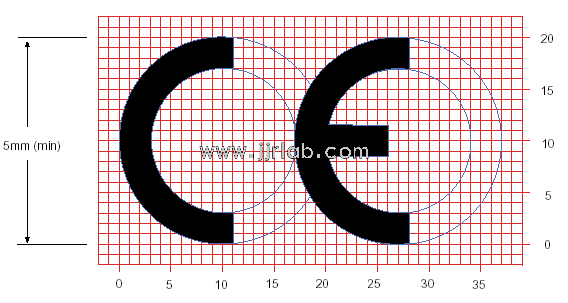
Wireless Product CE RED Certification Process
In a globalized market, the demand for wireless products in the EU continues to grow. If you wish to enter the EU market through cross-border e-commerce platforms like TEMU or Amazon, or through foreign trade, the CE-RED certification is an essential requirement.

What is CE-RED Certification?
CE-RED certification is a product safety certification system for radio equipment promoted by the European Union (EU). It replaces the previous R&TTE directive and is a legal requirement to ensure that radio equipment sold in the EU meets relevant safety, health, and environmental standards. The CE-RED directive, numbered 2014/53/EU, came into effect on June 13, 2016. Wireless products compliant with the old R&TTE directive are no longer allowed to be sold in the EU.
What are the Test Items for CE-RED Certification?
- Electromagnetic Compatibility Testing (EMC): Evaluates the device's performance in the electromagnetic environment, ensuring it neither interferes with other devices nor is affected by them.
- Safety Testing (LVD): Ensures the device does not pose any safety hazards under normal or faULt conditions.
- radio frequency testing (RF): Tests RF performance based on ETSI standards (e.g., EN 300 220 series), including transmission power, frequency stability, occupied bandwidth, spurious emissions, and receiver sensitivity.
- Frequency Notification (Notification): Verifies that the frequency band used complies with EU regulations.
- sar testing: Evaluates potential health effects of radio equipment on the human body, such as sar testing for devices like mobile phones.
How to Apply for CE-RED Certification?
Step 1: Understand CE-RED Certification
The CE-RED (Radio Equipment Directive) is mandatory for wireless products in the EU to ensure safety, health, and environmental compliance. It applies to products such as Bluetooth devices, Wi-Fi equipment, remote controls, and mobile phones.
Step 2: Confirm Product Scope and Classification
Determine if your product falls under CE-RED. Different wireless products may have varying requirements and standards. For example, short-range wireless devices and long-range communication devices differ in testing and parameter limits.
Step 3: Prepare Technical Documentation
- Product Manual: Include detailed descriptions of functionality, working principles, wireless technology (e.g., Bluetooth version, Wi-Fi protocol), frequency range, and transmission power.
- Circuit Diagrams and PCB Layouts: Provide detailed diagrams for evaluating electrical safety and electromagnetic compatibility.
- User Manual: Written in an EU official language, detailing installation, use, and maintenance instructions, along with safety precautions.
- Risk Assessment Report: Assess risks like electromagnetic radiation, interference, overheating, or short circuits, and outline preventive measures.
4. Select a Certification Body
- Accreditation: Choose a lab with wireless certification qualifications, such as China JJR Laboratory, known for comprehensive services and competitive pricing.
- Communication: Discuss the certification process, costs, timelines, and specific testing requirements.
5. Submit the Certification Application
- Application Form: Provide accurate product details, including name, model, brand, manufacturer’s information, and applicable standards or directive versions.
- Documentation and Samples: Submit technical documents and product samples. Ensure the samples represent the quality and performance of mass-produced items.
6. Product Testing Phase
- emc testing: Ensures products do not interfere with other devices and can function in complex electromagnetic environments.
- RF Performance testing: Evaluates parameters like transmission power, frequency accuracy, modulation characteristics, and receiver sensitivity.
- Safety Testing: Checks electrical and mechanical safety to prevent risks like electric shocks or structural failures.
- Rectification and Retesting (if needed): Address non-compliance issues reported during testing and resubmit for retesting.
7. Certification Issuance
After passing all tests, the certification body issues the CE-RED certificate, detailing product information, standards, and validity. You can then affix the CE mark on your product, making it legally marketable in the EU.
While CE-RED certification may seem complex, thorough preparation and adherence to the process can open doors for your product in the EU market, offering significant growth opportunities.
For consultation or CE-RED certification services, contact JJR Laboratory.
More:CE Certification mark | UL Certification cost | RCM Certification | UN38.8 battery
Email:hello@jjrlab.com
Write your message here and send it to us
 WEEE Registration for Waste Electrical &Electr
WEEE Registration for Waste Electrical &Electr
 MSDS Chemical Safety Testing
MSDS Chemical Safety Testing
 What Are the Differences Between UK REACH and EU R
What Are the Differences Between UK REACH and EU R
 E-Cigarette GB 41700 Compliance Testing
E-Cigarette GB 41700 Compliance Testing
 What Are the Testing Items of California Propositi
What Are the Testing Items of California Propositi
 E-Cigarette EU TPD Testing
E-Cigarette EU TPD Testing
 Testing Certification for E-cigarettes Exported to
Testing Certification for E-cigarettes Exported to
 What is Amazon US CPC Certification?
What is Amazon US CPC Certification?
Leave us a message
24-hour online customer service at any time to respond, so that you worry!




